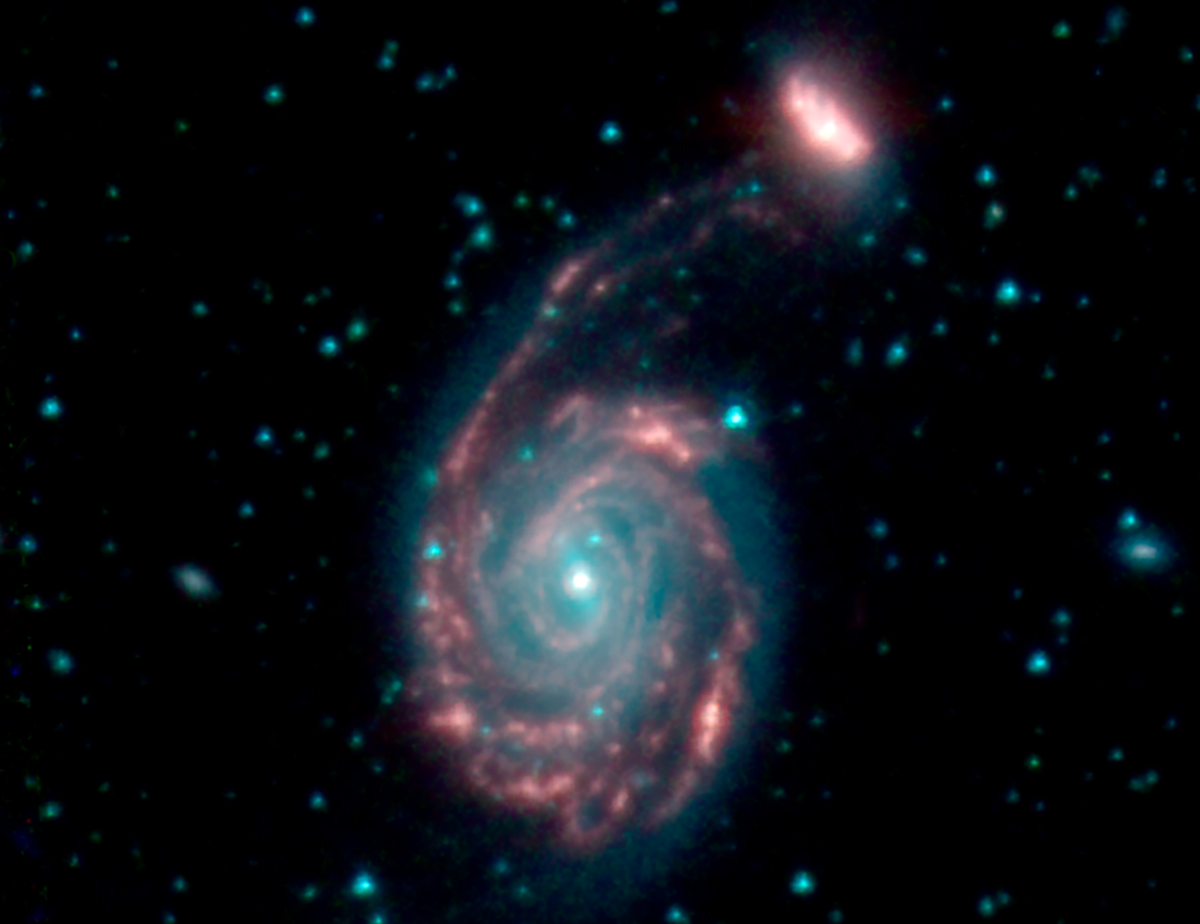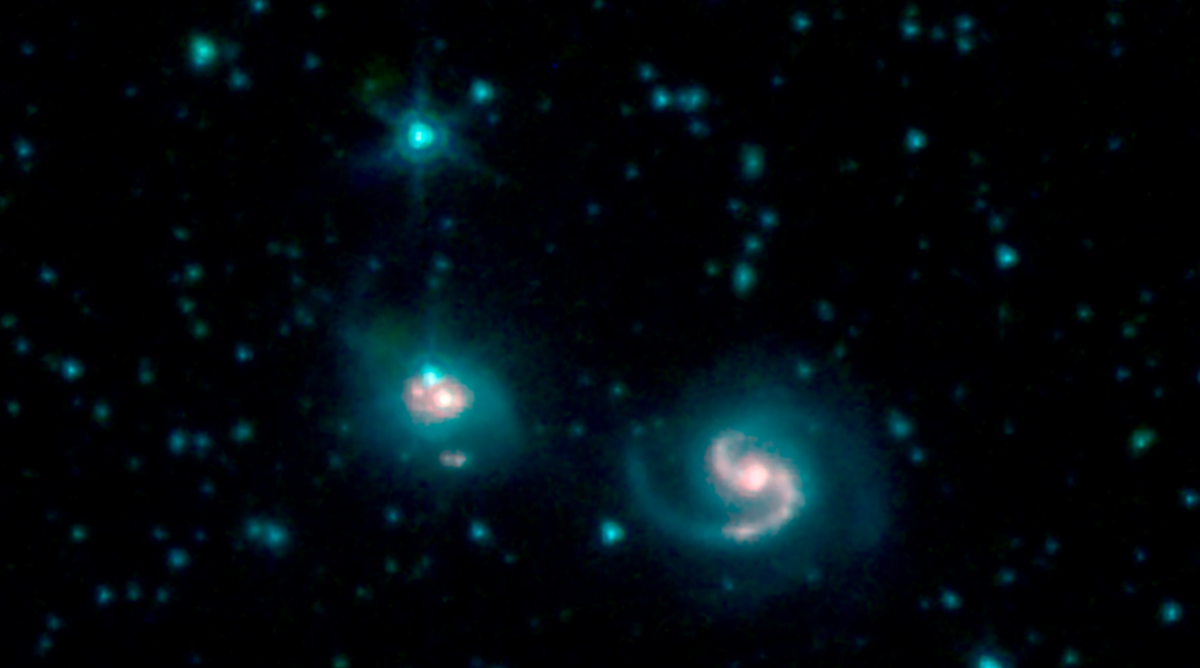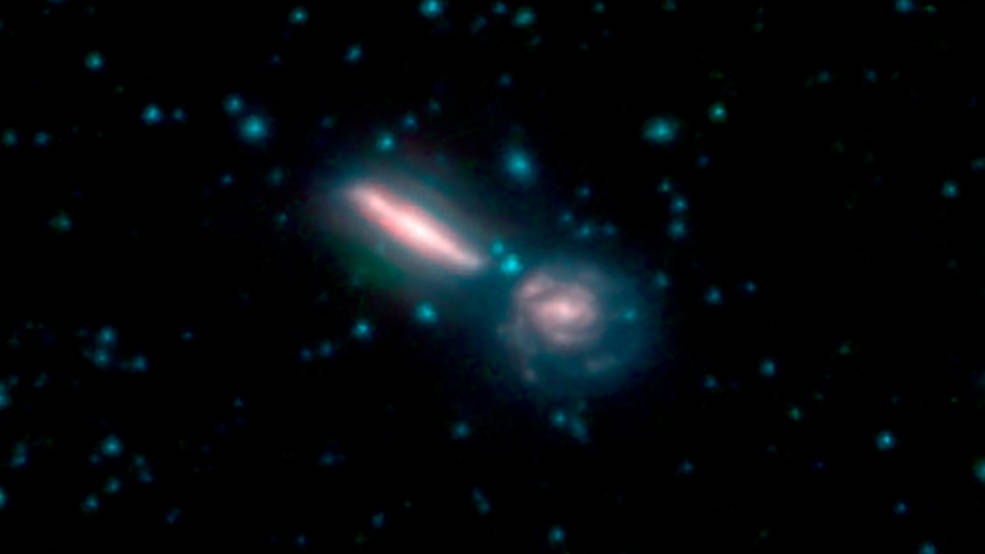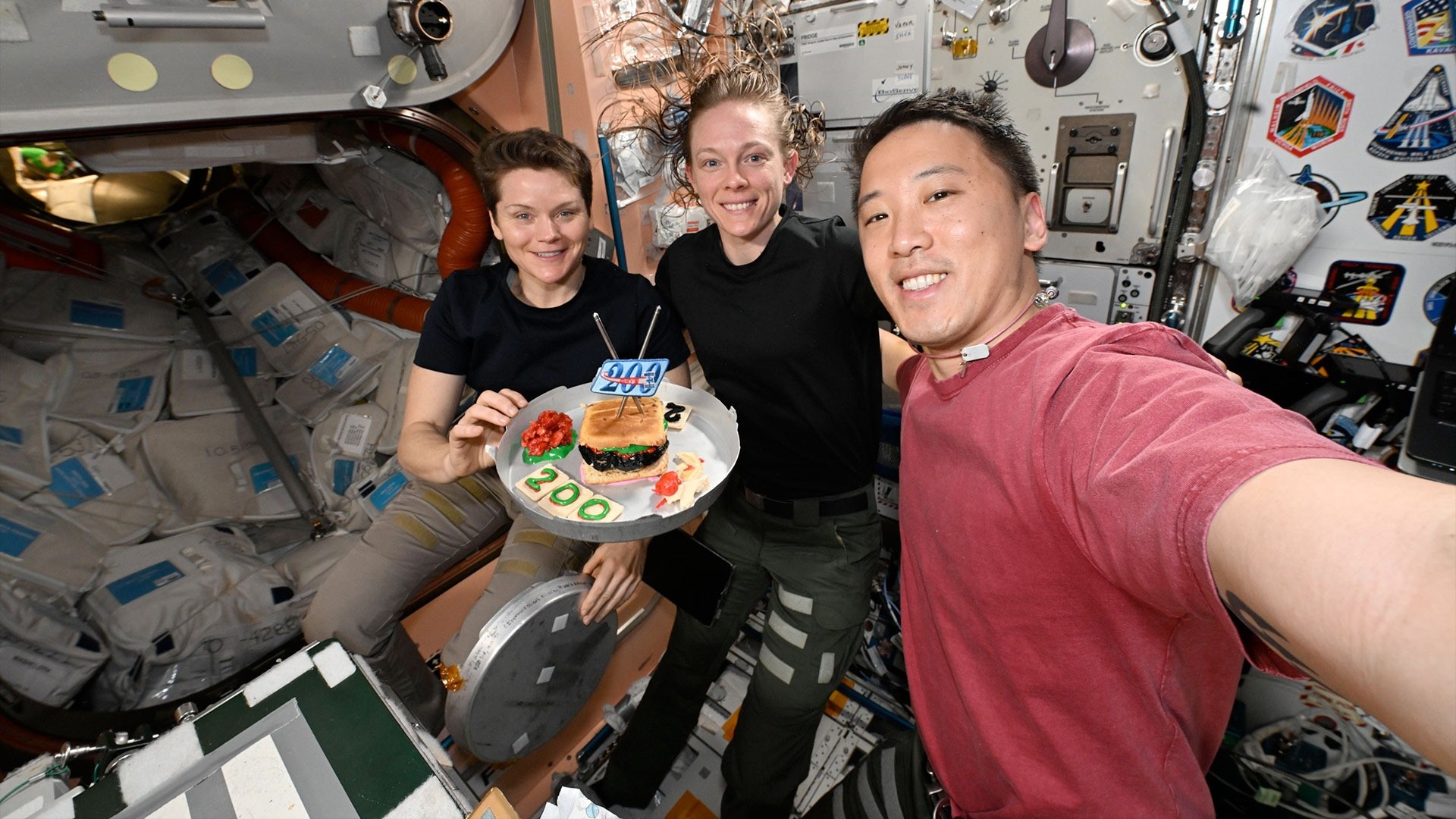Why Galaxies Snuggling Together Are Bad News for Starbirth

You could say that some relationships are doomed — especially in astronomy. A NASA telescope caught several galaxy pairs that will wither away as they grow too close together, robbing the neighborhood of gas that stars need to form.
NASA's Spitzer Space Telescope took the images to better understand how galaxies merge after getting trapped in each other's gravity, according to a statement from NASA. Merging is a rare process now — only a small percentage of galaxies are about to come together — but it was more common about 6 billion to 10 billion years ago, in the universe's youth. (The universe is estimated to be 13.7 billion years old.)
Studying mergers today helps scientists better understand how galaxies underwent this process earlier in the universe's history, providing insight into how the cosmos evolved. A program called Great Observatories All-sky LIRG Survey (GOALS) has already studied 200 nearby objects, including galaxies under merger.
Related: The Infrared Universe Seen by Spitzer Telescope
"One of the primary processes thought to be responsible for a sudden halt in star formation inside a merged galaxy is an overfed black hole," NASA officials said in the statement "At the center of most galaxies lies a supermassive black hole — a powerful beast millions to billions of times more massive than the sun. During a galactic merger, gas and dust are driven into the center of the galaxy, where they help make young stars and also feed the central black hole."
But merging comes at a high cost. As the black hole grows, it produces shockwaves that can ripple through the galaxy and expel gas from of the neighborhood, throwing away needed fuel for stars to be born. At worst, galaxies can lose all the fuel they need to create new stars, dooming the galaxies to fade away as their current stars age and die.
NASA officials said researchers are still trying to understand the relationship between mergers, star formation and black hole activity. GOALS scientists recently used the W.M. Keck Observatory in Hawaii to look for shockwaves emanating from an "active galactic nucleus," which refers to an active and bright object with a hungry supermassive black hole embedded inside, eating gas and other material nearby. This study found few shock signatures, which suggests "the role of active galactic nuclei in shaping galaxy growth during a merger may not be straightforward," NASA officials said.
Breaking space news, the latest updates on rocket launches, skywatching events and more!
While merging galaxies glow in infrared light easily spotted by Spitzer, GOALS scientists have also used other space observatories such as the Hubble and Chandra space telescopes and the European Space Agency's Herschel satellite. Several ground-based observatories have also been used for GOALS studies, including the Keck Observatory, the National Science Foundation's Very Large Array and the Atacama Large Millimeter Array.
- The Universe: Big Bang to Now in 10 Easy Steps
- Stunning Photos of Our Milky Way Galaxy (Gallery)
- 10 Amazing Space Discoveries by the Keck Observatory
Follow Elizabeth Howell on Twitter @howellspace. Follow us on Twitter @Spacedotcom and on Facebook.
Join our Space Forums to keep talking space on the latest missions, night sky and more! And if you have a news tip, correction or comment, let us know at: community@space.com.

Elizabeth Howell (she/her), Ph.D., was a staff writer in the spaceflight channel between 2022 and 2024 specializing in Canadian space news. She was contributing writer for Space.com for 10 years from 2012 to 2024. Elizabeth's reporting includes multiple exclusives with the White House, leading world coverage about a lost-and-found space tomato on the International Space Station, witnessing five human spaceflight launches on two continents, flying parabolic, working inside a spacesuit, and participating in a simulated Mars mission. Her latest book, "Why Am I Taller?" (ECW Press, 2022) is co-written with astronaut Dave Williams.


